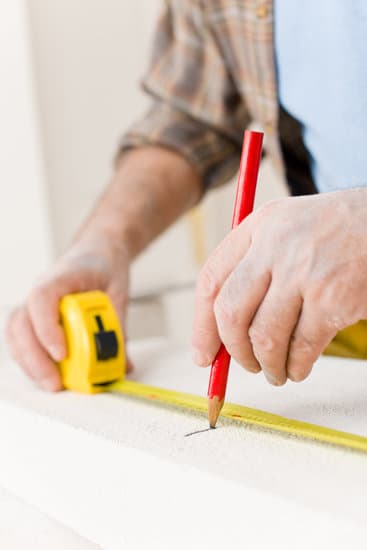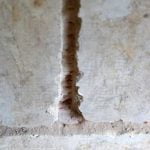What is the average home improvement loan interest rate? Home improvement loans are a popular way for homeowners to fund renovation or remodeling projects, but the interest rates on these loans can vary widely.
In this article, we will delve into the world of home improvement loan interest rates, exploring the different types of home improvement loans available and how they work. We will also discuss the factors that can influence these interest rates and provide practical tips for securing a low interest rate on your home improvement loan.
When it comes to financing home improvements, there are several options to consider, including personal loans, home equity loans, and home equity lines of credit (HELOCs). Understanding the differences between these types of loans and how they function is crucial in making an informed decision. Additionally, understanding how these loans work can help homeowners determine which type of loan is best suited for their specific needs and financial situation.
Factors such as credit score, loan amount, and loan term can significantly impact the interest rate a borrower may receive when applying for a home improvement loan. It is important to be aware of these factors and how they can affect the overall cost of borrowing. By analyzing current market trends and average interest rates for home improvement loans in the US, homeowners can gain valuable insights into what they might expect when seeking financing for their projects.
Factors Affecting Home Improvement Loan Interest Rates
The average interest rate for a home improvement loan can be influenced by a variety of factors. One of the most significant factors is the borrower’s credit score. Lenders use credit scores to assess the risk of lending money, so borrowers with higher credit scores are more likely to qualify for lower interest rates. On the other hand, borrowers with lower credit scores may face higher interest rates or even struggle to secure a loan at all.
Another factor that can impact home improvement loan interest rates is the loan amount. Generally, larger loan amounts may come with lower interest rates, as lenders are able to spread their costs and risks over a larger principal balance. Conversely, smaller loans may carry higher interest rates due to the potential risk and administrative costs involved for lenders.
Additionally, the loan term can also play a role in determining the average interest rate for a home improvement loan. Shorter loan terms typically result in lower interest rates because lenders face less uncertainty and have the opportunity to lend out their funds again sooner. On the other hand, longer loan terms may come with slightly higher interest rates due to the increased risk and time value of money.
When comparing average home improvement loan interest rates across different lenders, it’s important to remember that individual circumstances can significantly impact these averages. Borrowers should always shop around and consider multiple quotes from various financial institutions before making a decision on their home improvement financing.
| Factors Affecting Interest Rates | Impact on Average Rates |
|---|---|
| Credit Score | Higher scores typically result in lower rates |
| Loan Amount | Larger amounts may lead to lower rates |
| Loan Term | Lender considers shorter terms less risky and offers lower rates |
Current Trends in Home Improvement Loan Interest Rates
When considering taking out a home improvement loan, it is crucial to understand the current market trends and average interest rates in the US. The average home improvement loan interest rate can vary depending on a range of factors, including the type of loan, the borrower’s credit score, and the economic environment.
According to recent data, the average interest rate for a home improvement loan in the US ranges from 5% to 15%, with some lenders offering rates outside of this range.
Market trends play a significant role in determining home improvement loan interest rates. For example, during periods of economic stability and low inflation, interest rates are likely to be lower. On the other hand, during times of economic uncertainty or high inflation, interest rates may increase. Additionally, competition among lenders can also impact average interest rates for home improvement loans. It is essential for borrowers to stay informed about these trends and factors that could influence their borrowing costs.
In recent years, there has been a slight increase in average home improvement loan interest rates due to various economic factors such as inflation and changes in monetary policy. However, despite this increase, many borrowers are still able to secure favorable interest rates by shopping around and comparing offers from different lenders. Understanding these current market trends and average interest rates will empower borrowers to make informed decisions when seeking financing for their home improvement projects.
Comparison of Average Interest Rates by Lenders
When exploring options for home improvement loans, one of the most important considerations is the interest rate offered by different lenders. The interest rate determines how much you will ultimately pay for the loan in addition to the principal amount borrowed. Understanding the average interest rates offered by different lenders and what factors affect these rates can help borrowers make informed decisions when selecting a lender for their home improvement project.
Factors Affecting Interest Rates:
- Credit Score: A borrower’s credit score plays a significant role in determining the interest rate they are eligible for. Typically, individuals with higher credit scores are offered lower interest rates as they are considered less risky to lend to.
- Loan Amount: The amount of the loan can also impact the interest rate offered. Higher loan amounts may result in higher interest rates, while smaller loans may come with more competitive rates.
- Loan Term: The length of the loan term can influence the interest rate. Shorter loan terms often come with lower interest rates compared to longer-term loans.
Comparison of Average Interest Rates:
When comparing average interest rates by lenders, it is essential to shop around and obtain quotes from several potential lenders. Different financial institutions and online lenders may offer varying interest rates based on their individual lending criteria and market positioning. Some lenders may also specialize in home improvement loans and offer more competitive rates compared to traditional banks or credit unions.
Understanding what factors influence these rates and obtaining multiple quotes allows borrowers to make informed decisions regarding their home improvement financing. By comparing average interest rates from different lenders, individuals can secure a favorable rate that aligns with their financial goals and overall budget for their renovation project.
Tips for Securing a Low Interest Rate
When it comes to securing a low interest rate on a home improvement loan, there are several strategies that borrowers can use to their advantage. By being proactive and strategic in your approach, you can increase your chances of qualifying for a lower interest rate, ultimately saving you money over the life of the loan.
Improve Your Credit Score
One of the most important factors that lenders consider when determining the interest rate for a home improvement loan is the borrower’s credit score. A higher credit score demonstrates to lenders that you are a responsible borrower and less of a risk, which can result in lower interest rates. To improve your credit score, focus on paying down outstanding debt, making timely payments, and avoiding opening new lines of credit before applying for a home improvement loan.
Shop Around for Lenders
Another valuable tip for securing a low interest rate on your home improvement loan is to shop around and compare offers from multiple lenders. Different lenders may have different criteria for determining interest rates, so by obtaining quotes from several institutions, you can choose the best offer available to you. Be sure to consider both traditional banks and credit unions, as well as online lenders, as they may offer competitive rates.
Consider a Shorter Loan Term
The length of the loan term can also affect the interest rate offered by lenders. Generally, shorter loan terms come with lower interest rates as they present less risk to the lender. Consider opting for a shorter repayment period if it aligns with your financial situation and goals. While this may result in higher monthly payments, it could ultimately save you money on interest over time.
By implementing these tips and strategies, borrowers can increase their chances of securing a lower interest rate on their home improvement loan. It’s essential to be proactive in improving your credit score, shopping around for rates from multiple lenders, and considering shorter loan terms to potentially reduce the overall cost of borrowing.
Understanding APR vs Interest Rate
When considering a home improvement loan, it’s important to understand the difference between APR and interest rate. The interest rate is the percentage of the principal loan amount that is charged for borrowing, while APR includes not only the interest rate but also any additional fees or costs associated with the loan. Here’s a breakdown of what you need to know:
- Interest Rate: The interest rate is essentially the cost of borrowing money from the lender. It is expressed as a percentage and directly impacts your monthly payments on the loan.
- APR: The Annual Percentage Rate (APR) provides a more comprehensive picture of the total cost of borrowing. In addition to the interest rate, it includes other charges such as origination fees, points, and mortgage insurance (if applicable). Lenders are required to disclose the APR when advertising a loan.
Understanding the difference between these two terms is crucial as it can significantly impact the overall cost of borrowing for home improvements. A lower interest rate may seem attractive, but if there are added fees that contribute to a higher APR, then the overall cost of borrowing may be greater.
Ultimately, when comparing loans from different lenders, it’s important to look at both the interest rate and APR to get a complete understanding of how much you’ll be paying for your home improvement loan.
There are calculators available online that can help you understand this better by inputting your specific loan details and seeing how different factors such as upfront costs and ongoing expenses can add up over time. This extra step will work wonders in helping you find out what true costs you’ll be facing with this kind of investment and help you secure a competitive home improvement loan with manageable rates.
Case Studies
Jane, a homeowner in California, was looking to renovate her kitchen and bathroom. After researching different home improvement loan options, she decided to apply for a personal loan with a reputable online lender.
Due to her excellent credit score and strong financial history, Jane was able to secure a competitive interest rate of 8.5% for her $20,000 loan. She attributes her success in securing a low interest rate to her diligent efforts in maintaining a high credit score and comparing offers from multiple lenders before making a decision.
Case Study 2: John’s Experience With Securing a Low Interest Rate
John, a homeowner in Texas, wanted to add an extension to his home. He opted for a home equity loan from his local credit union as it offered the most competitive rates compared to other lenders.
With an impressive credit score and substantial equity in his home, John secured an interest rate of 6% on his $50,000 loan. His advice to others looking for low interest rates is to explore home equity loans if they have substantial equity in their homes as these often offer lower rates due to the collateral involved.
Case Study 3: Maria’s Strategy for Obtaining a Competitive Interest Rate
Maria, a homeowner in Florida, was planning extensive renovations on her property and chose a cash-out refinance as the best financing option for her project. By improving her credit score over time and negotiating with different lenders based on their initial offers, Maria was able to secure an interest rate of 7% for her $100,000 loan-a remarkably low rate considering the size of the loan and the scope of the project.
By examining these case studies, it becomes clear that individuals who are proactive about maintaining good credit scores, exploring various loan options, and negotiating with lenders are more likely to secure competitive interest rates for their home improvement loans. These real-life examples demonstrate that careful consideration and strategic planning can lead to substantial savings when it comes to borrowing money for home improvement projects.
How to Compare and Shop for the Best Home Improvement Loan Interest Rate
When considering a home improvement loan, one of the key factors to take into account is the interest rate. The average home improvement loan interest rate can vary depending on several factors, including your credit score, loan amount, and loan term. However, by understanding how these factors affect interest rates and taking the time to shop around for the best rate, you can secure a favorable deal for your home improvement project.
It’s important to note that the average home improvement loan interest rate is currently around 5-7% in the US. However, this can fluctuate based on market trends and individual lender offers. To ensure you’re getting the best possible rate for your circumstances, it’s vital to compare offers from different lenders. By obtaining multiple quotes and understanding how each lender evaluates your creditworthiness and other factors, you can increase your chances of securing a competitive interest rate.
In addition to comparing interest rates, it’s crucial to take into account other aspects of the loan such as fees and repayment terms. Paying attention to these details will give you a holistic view of the overall cost of borrowing for your home improvement project. By following these steps and being diligent in your research, you can put yourself in a strong position to secure a low-interest home improvement loan that meets your needs.

I’m thrilled to have you here as a part of the Remodeling Top community. This is where my journey as an architect and remodeling enthusiast intersects with your passion for transforming houses into dream homes.





